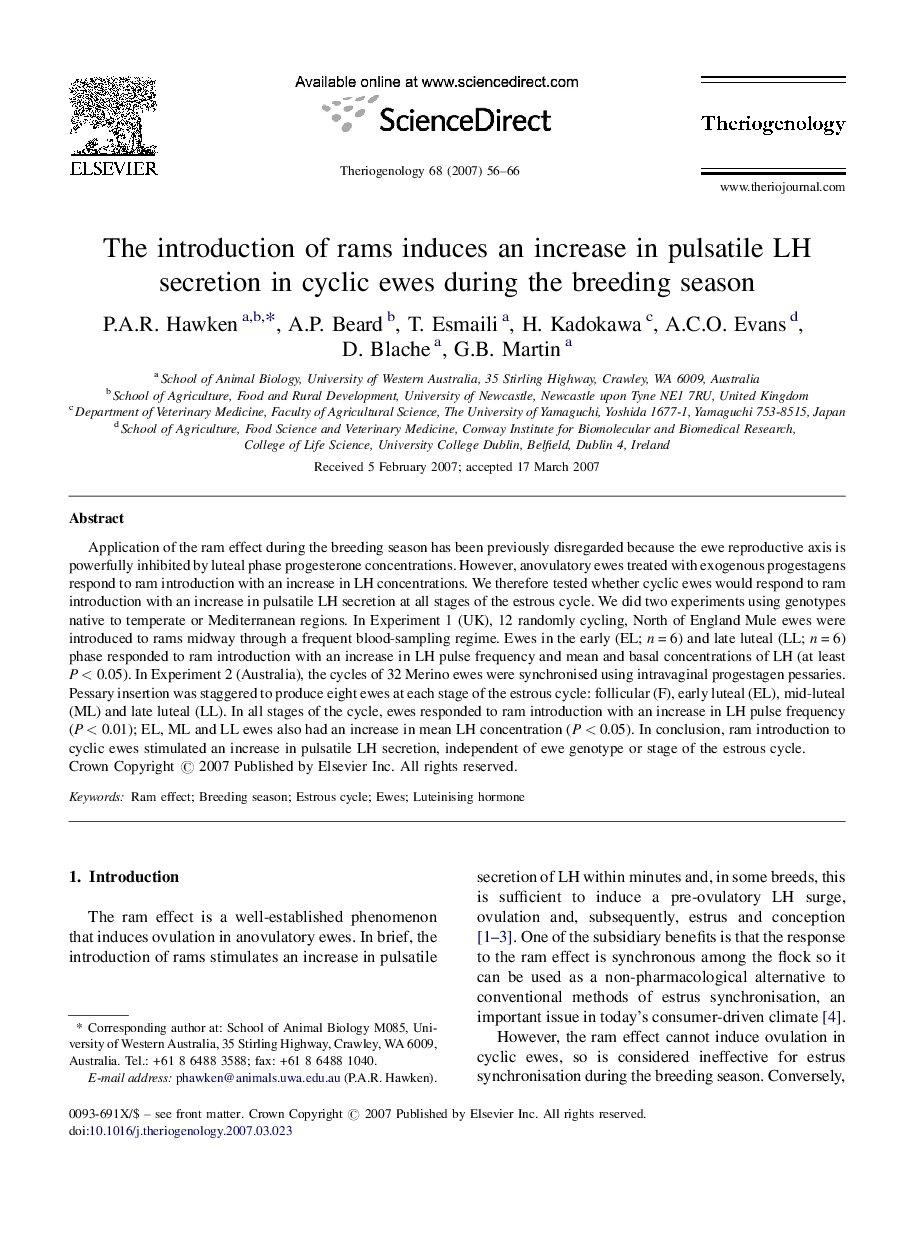| Article ID | Journal | Published Year | Pages | File Type |
|---|---|---|---|---|
| 2096398 | Theriogenology | 2007 | 11 Pages |
Application of the ram effect during the breeding season has been previously disregarded because the ewe reproductive axis is powerfully inhibited by luteal phase progesterone concentrations. However, anovulatory ewes treated with exogenous progestagens respond to ram introduction with an increase in LH concentrations. We therefore tested whether cyclic ewes would respond to ram introduction with an increase in pulsatile LH secretion at all stages of the estrous cycle. We did two experiments using genotypes native to temperate or Mediterranean regions. In Experiment 1 (UK), 12 randomly cycling, North of England Mule ewes were introduced to rams midway through a frequent blood-sampling regime. Ewes in the early (EL; n = 6) and late luteal (LL; n = 6) phase responded to ram introduction with an increase in LH pulse frequency and mean and basal concentrations of LH (at least P < 0.05). In Experiment 2 (Australia), the cycles of 32 Merino ewes were synchronised using intravaginal progestagen pessaries. Pessary insertion was staggered to produce eight ewes at each stage of the estrous cycle: follicular (F), early luteal (EL), mid-luteal (ML) and late luteal (LL). In all stages of the cycle, ewes responded to ram introduction with an increase in LH pulse frequency (P < 0.01); EL, ML and LL ewes also had an increase in mean LH concentration (P < 0.05). In conclusion, ram introduction to cyclic ewes stimulated an increase in pulsatile LH secretion, independent of ewe genotype or stage of the estrous cycle.
